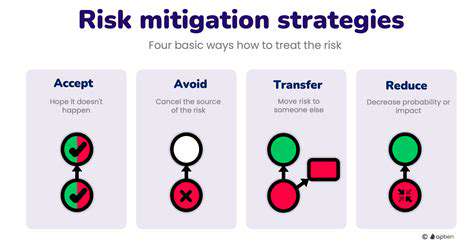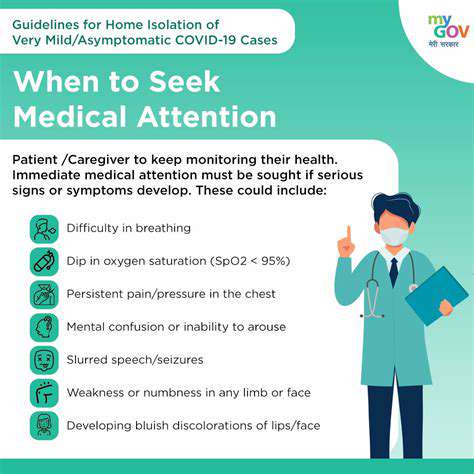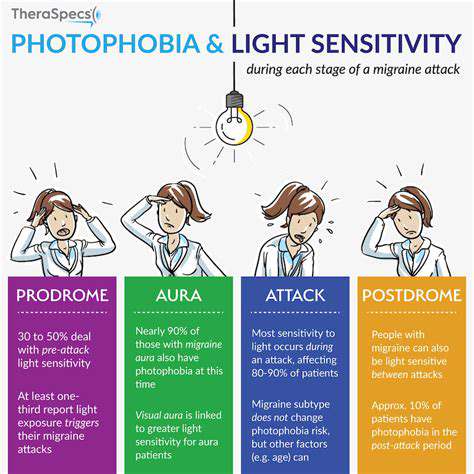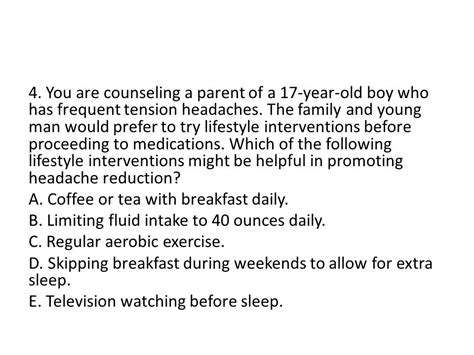Can Children Outgrow Migraines?
The Prevalence of Pediatric Migraines
Understanding Pediatric Migraines
Pediatric migraines, characterized by recurrent headaches, are a significant concern for parents and healthcare providers. These episodes can significantly impact a child's daily life, affecting their ability to attend school, participate in social activities, and maintain overall well-being. Understanding the nuances of pediatric migraines is crucial for effective management and support.
Recognizing the symptoms and triggers in children is often more challenging than in adults. Children may not be able to articulate their pain effectively, which can lead to delayed diagnosis and inadequate treatment. Early intervention is key to minimizing the impact of migraines on a child's development and quality of life.
Identifying the Symptoms in Young Patients
Recognizing the symptoms of pediatric migraines is crucial for prompt intervention. Symptoms can vary significantly, and children may not always describe their discomfort using adult terminology. They might present with nausea, vomiting, or extreme sensitivity to light and sound. Some children might exhibit behavioral changes, such as irritability or withdrawal, as accompanying symptoms.
Careful observation of the child's behavior and any reported discomfort is essential. Parents and caregivers should note the frequency, duration, and intensity of the headaches, as well as any accompanying symptoms. This information is invaluable for healthcare professionals in making an accurate diagnosis.
The Role of Genetics and Triggers
While the exact causes of pediatric migraines remain somewhat elusive, genetic predisposition plays a significant role. A family history of migraines often suggests a higher risk for a child developing the condition. Environmental triggers, such as stress, changes in sleep patterns, and certain foods, can also act as significant factors.
Diagnostic Challenges and Procedures
Diagnosing migraines in children can be challenging due to the varying presentation of symptoms. A thorough medical history, including a review of family medical history, is essential. Physical examinations and ruling out other potential causes of headaches are crucial steps in the diagnostic process.
Neurological evaluations, including potential brain imaging, can help differentiate migraines from other conditions that may cause similar symptoms. These procedures aid in ensuring the most appropriate treatment plan is established.
Treatment Options and Management Strategies
Effective management of pediatric migraines involves a multi-faceted approach. This includes medication strategies, such as over-the-counter pain relievers and prescription medications, when necessary. Lifestyle modifications, such as stress reduction techniques and regular sleep schedules, are often integral parts of the management plan.
Long-Term Impact and Prognosis
The long-term impact of pediatric migraines can vary greatly depending on the individual child's response to treatment and the severity of the condition. Some children may experience migraines into adulthood, while others may find their symptoms lessen or even resolve over time.
Ongoing monitoring and adjustments to the treatment plan are essential for ensuring optimal management and minimizing the impact of migraines on a child's overall well-being. Regular follow-up appointments with a healthcare professional are crucial for long-term care and management.
The Potential for Outgrowing Migraines
A common question for parents is whether children can outgrow migraines. While some children may experience a decrease in frequency or severity of migraines as they grow older, others may continue to experience migraines throughout their lives. The unpredictable nature of the condition makes it difficult to definitively predict the long-term trajectory.
Ongoing research continues to explore the underlying mechanisms of pediatric migraines and potential factors influencing the trajectory of the condition. This ongoing research is crucial for refining treatment strategies and improving outcomes for affected children.
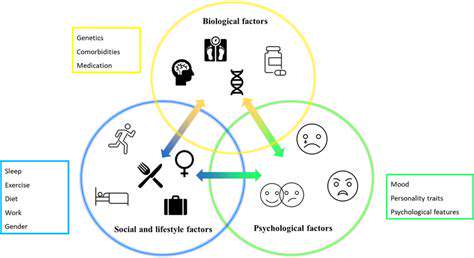
The Role of Lifestyle and Environmental Factors
Lifestyle Choices and Migraine Frequency
Many lifestyle factors can significantly impact migraine frequency and severity in children. A consistent sleep schedule, crucial for overall health, plays a vital role. Insufficient or inconsistent sleep can trigger migraines in some children, highlighting the importance of establishing regular sleep patterns. A balanced diet rich in fruits, vegetables, and whole grains, while limiting processed foods and sugary drinks, can also contribute to managing migraine triggers. Proper hydration is essential, as dehydration can exacerbate migraine symptoms in some individuals. Stress management techniques, such as mindfulness exercises or deep breathing, can help mitigate the impact of stress on migraine occurrences. Regular physical activity, while beneficial for overall health, should be approached carefully, as overexertion or sudden changes in activity levels can sometimes trigger migraines in children.
Furthermore, maintaining a regular meal schedule and avoiding skipping meals can help stabilize blood sugar levels, which are sometimes linked to migraine episodes. Exposure to environmental allergens, such as pollen or dust mites, can also trigger migraines in susceptible children. Regular allergy testing and implementing strategies to minimize exposure to these allergens can be beneficial. Finally, understanding and managing potential triggers, such as certain foods, smells, or weather changes, is crucial for developing personalized migraine management strategies.
Environmental Influences on Migraine Development
Environmental factors, beyond allergens, can significantly impact a child's susceptibility to migraines. Exposure to bright or flickering lights, loud noises, and strong smells can act as triggers for some children. Changes in barometric pressure, often associated with weather patterns, can also influence migraine occurrences. Understanding these environmental triggers is crucial in developing preventative measures and managing migraine episodes effectively. Air pollution, particularly in urban areas, may also contribute to migraine frequency in some individuals.
Similarly, the quality of the sleep environment plays a vital role. A dimly lit, quiet, and cool bedroom can promote better sleep and reduce the likelihood of migraine triggers associated with disrupted sleep. Children who regularly experience stress or anxiety in their environment, such as family conflict or school pressures, may also be more prone to migraine headaches. Addressing these stressors through counseling or support systems can significantly impact the overall well-being and reduce migraine occurrences.
The Interplay of Lifestyle and Environment
The interplay between lifestyle choices and environmental factors is complex and often intertwined. For example, a child who experiences stress in school (environmental) might respond by adopting unhealthy eating habits (lifestyle), which in turn, can contribute to migraine triggers. Similarly, a child's exposure to allergens in their home environment (environmental) might be exacerbated by a lack of consistent sleep due to lifestyle factors, leading to increased migraine occurrences. Recognizing these interconnected relationships is essential for developing comprehensive migraine management strategies.
A balanced approach that considers both lifestyle and environmental influences is crucial for managing migraines in children. This involves not only identifying and avoiding triggers but also promoting healthy habits and creating a supportive environment. Regular communication between parents, healthcare providers, and educators is vital in understanding the interplay of factors and developing a tailored plan to minimize migraine episodes.
Addressing the environmental factors in a child's life, like noise levels or air quality, can be just as crucial as modifying their lifestyle. Understanding how these elements interact can often reveal hidden migraine triggers and allow for more effective intervention strategies.
Ultimately, a combination of lifestyle modifications, environmental adjustments, and medical interventions tailored to the individual child can provide the most effective approach to managing migraines.
